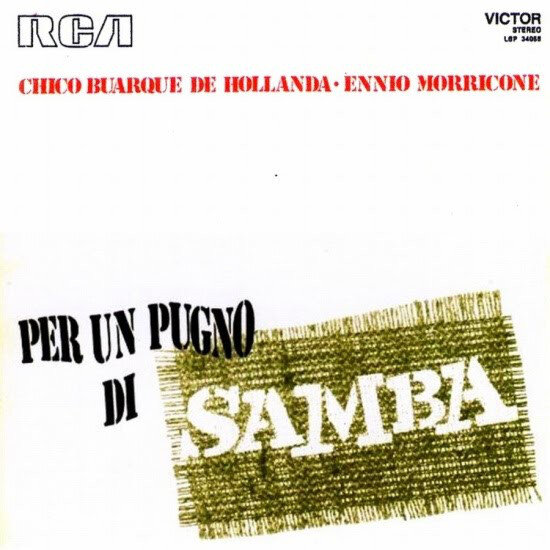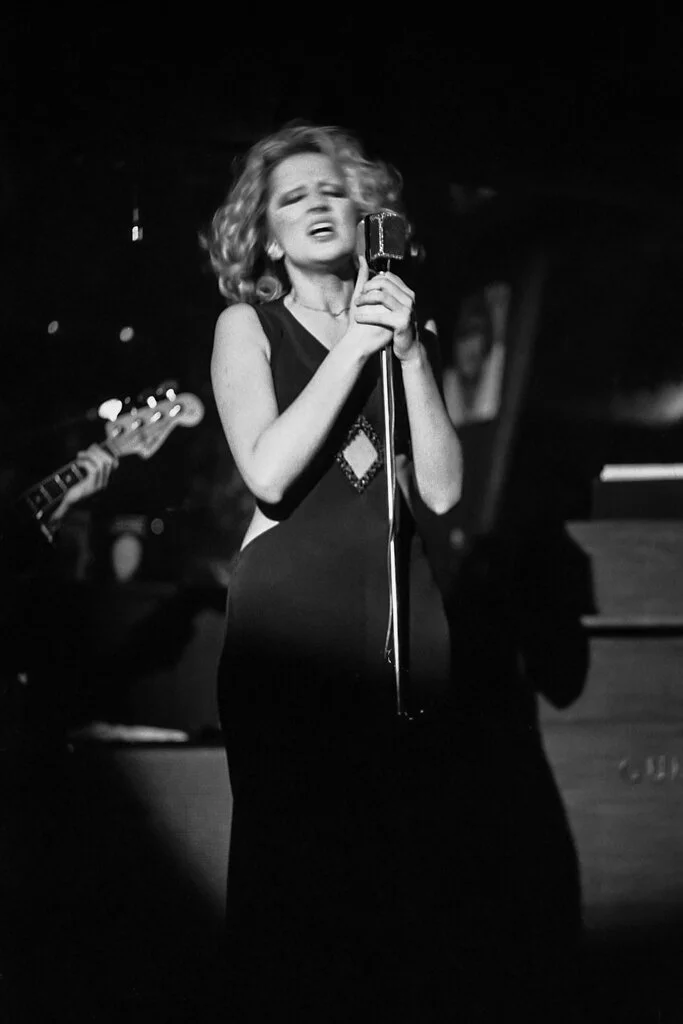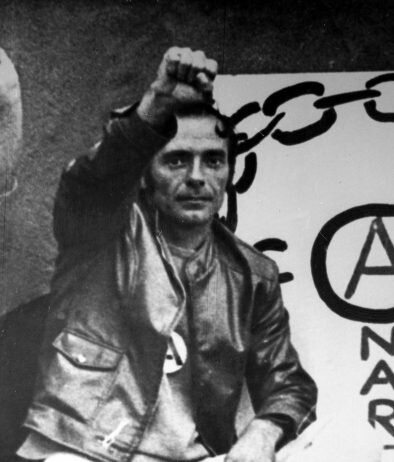Italia 70 - The Sound of Political Dissent / Milan - Bossa, Bombs, and the Lost Innocence
As Milan is hit by a bombing attack that marks the beginning of the Strategy of Tension, Bossa Nova and Samba play on Italian radios painting the portrait of a vanishing country. The evocative South American rhythms with their uptempo saudade, imported by asylum-seeking Brazilian artists, clash with the violence and industrialisation clogging Italy. For the second installment of Italia 70 - The Sound of Political Dissent, Lorenzo Cibrario looks into the loss of innocence of a country.
Milan. 12th December of 1969. The city is lit up for the imminent holiday season, the smell of roast chestnuts lingers in the air. A man walks down the streets of the city center, in a dense fog. He wears a blue Loden, a grey Borsalino hat and a dark tie. He can feel something electric in the air as people seem nervous, albeit busy with the Christmas shopping. He stops at the lobby of a 1950s building with green and dark marble panels, and a wooden and brass front door. He lights up a Blue Merit and notices a paper flyer at his feet, it claims: ‘Against the middle-class goals of Jobs, Wives, and Cars’ and it portraits a photo of the Colombian Guerriero Camillo Torres. It is signed by a generic Pamphlet for the Negative University.
The man seems nervous and looks at his watch: it’s 4.20 pm. The doorman glares worryingly at him and turns up the volume of the boxy portable TV set, where Mina is singing ‘Conversazione’, which, together with ‘La Banda’, ‘Non Illuderti’, ‘C’è Più Samba’, and ‘Dai Dai Domani’ symbolises Mina’s adventure into Bossa and Samba during the second half of the 60s. Many of these songs had made it into Italian homes when in 1967 Barilla, the pasta firm, succeeded in signing an exclusive deal with Mina for a series of adverts directed by choreographer Antonello Falqui, the spearhead and mastermind of most RAI television channel shows, and styled by designer Piero Gherardi.
The traffic around the Dome is frantic and some off-work taxi drivers are enjoying a Campari in some local bars. From the radio of a burgundy Alfa Romeo GT Giulia, the notes of a song by Paola Orlandi are gently playing. The track is ‘Un Impermeabile Bianco’ and together with ‘Panorama’ and ‘Papaya’ draws the excursus into Brazilian music by Miss Orlandi, after several years in the music business. The song is a delicate Bossa used for the end titles of a noir RAI TV show called Giocando a Golf Una Mattina - an Italian adaptation of A Game of Murder by Francis Durbridge.
1969 has been a very profitable year for our man - so much he can now buy lavish presents for his wife and daughters, as soon as he’s done with the duties of the day. In his left hand he holds a camel-coloured leather bag, inside, relevant documents he has to deliver to the local bank. He's a lawyer and he deals with clients in the agricultural sector, which is now under attack by unruly industrialization.
The area of Milan is experiencing an excruciating evolution, often violent, as it is rapidly becoming a metropolis. Together with Turin, Milan is expanding like wildfire, eating up satellite villages, devouring the countryside, wiping out the primary sector, and setting up the process that will lead the city to become the biggest tertiary work hub of Italy. The whole process does not come without any pain. Students and workers are manifesting their political dissent with strikes against managers, hard shifts, the capitalist estrangement, and the moral violence of the factories.
Mario Sironi’s paintings captured the urban expansion of Milan, a city that by 1969 was rapidly turning into a metropolis and where the fields were being swallowed by concrete.
If these facts were not enough, a constellation of extra-parliamentary groups, either far left and far right, started, since 1968, to inoculate fear, through what has been called (by an English journalist of The Observer in 1969) “The Strategy of Tension”. Italy was changing from being a postcard-like set to a land of fear and terror.
At the time of our story, Milan is still scarred from the latest terrorist attack that happened on April 25th at the FIAT automobiles trade fair, where a bomb exploded, injuring 20 people. As if that was not enough, the terrorist attacks of the night between the 8th and 9th of August, when eight bombs detonated on eight different trains across the nation, further spread a feeling of paranoia among the citizens. On both of the occasions, the terrorists were neofascist groups. The country is clearly terrorized and not well governed: hidden Masonic forces are pulling strings of something bigger, trying to push the government to collapse.
The air is getting wet and colder, the lawyer is concealing his face under the torque of the blue Loden. He looks at the clock, it’s 4.25 pm, time to go to the Bank of Agriculture before it shuts at 5 pm. But before, he needs a coffee to wake himself up.
The contrast between Italy’s disappearing countryside and the increasing urbanization stands out in Alberto Sordi’s Help Me, My Love titles sequence.
On the scaffolding of a building, the large poster of the movie Help Me, My Love, with Alberto Sordi - released in July 1969, it is still screened in several theaters of the city after selling six million tickets - oversees the square with the Bank and the cafe. The score of the film is composed by the renowned maestro Piero Piccioni and features, among other gems, a gentle Bossa Nova named “Bossa Per Alberto”, a tribute to the film’s main actor and Piccioni long-time collaborator Sordi.
During the whole of the 60s, a plethora of Bossa Nova and Samba-inspired soundtracks were written by incredibly talented Italian composers. Alongside Piccioni featured the likes of Ennio Morricone, Piero Umilani, Armando Trovajoli, Stelvio Cipriani, Alessandro Alessandroni and many many more. The idea of Italy portrayed by these films and their Bossa Nova scores was that of a wealthy country, optimistic towards the future. However, That kind of postcard-like depiction of Italy - with seaside shores, cabrio cars, Hully Gully, Surf music and endless summers - could not be farther than the current Milan.
Samba and Bossa Nova became a trend in 1960s and 1970s Italy after many Brazilian artists sheltered in Italy to escape their country’s tyrannical government.
Above: Ornella Vanoni, Vinicius De Moraes, Toquinho - La Voglia, La Pazzia, L’Inoscienza, L’Allegria, Vanilla, 1976.
Left: Chico Buarque De Hollanda, Ennio Morricone - Per Un Pugno Di Samba, RCA, 1970.
Our man crosses Piazza Fontana, the bus 42 drives at the very moment and splashes some water on his coat. He walks in a bar and orders a caffè macchiato at the counter. He does not have good news for his new clients: there is nothing he or anybody else can do to stop the building speculation of Via Forlanini, too much power gravitates around it. Whoever owns farmhouses in the area has to move away, and leave space for new council houses for immigrants from the south of Italy, steel and iron workers. The gas produced by cars and airplanes is contaminating the water and stressing the cows, the production of their milk has decreased by a third.
From a tiny, orange CGE radio, set by a Cinzano napkin holder , Ornella Vanoni has been whispering ‘Tristezza’, since 1967. The song is a jovial Samba played by the Maestro Augusto Martelli, author, among many other masterpieces, of a freshly released album called L’Orchestra di Augusto Martelli Dal Vivo [1969]. The groove of the song is enthralling but mixed to that tone of nostalgia that is typical of the Brazilian Saudade, highlighted by the melancholic voice of Mrs. Vanoni.
At the time, the singer was the symbol of the Milanese intelligentsia, and was renowned for her works exploring the folklorist theme of the city’s working-class low lives with theatre intellectuals Dario Fo and Giorgio Strehler, under the name of Canzoni Della Mala. At the end of the 60s, though, Mrs. Vanoni decided to further engage with Brazilian music, an adventure in sound that would lead, in 1976, to the masterpiece La Voglia, La Pazzia, L’Incoscienza, L’Allegria.
The song playing in the cafe represents just the tip of the iceberg of the mare magnum of Latin, Central, and South American-inspired songs that were engaging the Italian musical scene. Filling up the quench of pop music, the sound coming from South America became from the mid-60s to the mid-70s the score of the loss of innocence Italy went through. Syncopated rhythms resulted in the soundtrack to the shift from an idyllic country to a brutal, industrial one, flamed by a slow-motion civil war.
Mina was among the Italian artists who were influenced the most by Brazilian music.
Credits: Franco Turcati, 1970.
While sipping his coffee, our lawyer is thinking about Brazilian poet and musician Vinicius De Moraes' words: “In questo momento tutti i caffè sono pieni di uomini vuoti” (“In this moment all the coffee shops are full of empty men”) from the record La Vita, Amico, è l’Arte dell‘Incontro [1970]. The album is written by several influential artists: Italian war poet Giuseppe Ungaretti, pop singer Sergio Endrigo, and Vinicius. Making the record special was also an astounding line-up of session musicians made of heavyweight composers including, among others, Luis Bacalov (piano), Toquinho and Maurizio De Angelis (guitars). Endrigo, with his French Chanson-like croon and melancholic but witty mood, was the perfect interpreter of the long playing’s profound but playful lyrics, Ungaretti-penned translations of De Moares’ poems - the two were in fact long-time friends.
An explosion, followed by a roar, from the other side of the circus, shakes the glasses and bottles behind the counter. The lawyer and other customers fall on the floor, seeking shelter under the tables. In very few minutes, a wave of sirens, ambulances and firefighters run inside the bank. Black smoke and red flames spit outside the front door: it’s another terrorist attack. If this were not enough, at the same moment, in another part of the city, another bomb placed inside another bank is destined to never detonate. Italy is under attack by an inner war that is engulfing the country. Allegedly, the strategy of tension killed 370 and injured 1000 between 1969 and 1982.
Firefighters and policemen inspect the blown up site of the Bank of Agriculture in Piazza Fontana, Milan, on December 12th, 1969.
Credits: Wikipedia.
During these years, aligned with the sound, also the imagery of South American coups came to Italy. In 1969, Luciano Salce directs the fanta-political comedy film Colpo Di Stato (Coup D’Etat) whose score, produced by Gianni Marchetti, is filled with Brazilian evocative tracks, above all ‘Una Bossa Piccola Piccola’. The soundtrack’s album cover is pretty explanatory of the Italian spirit of the time.
It is commonly accepted that the US in the form of FBI on one side, and Moscow on the other side, were pulling several strings in the Italian terrorist game, all managed by Italian politicians of the time.
Cold War and the strategy of tension inspired the cover design for Gianni Marchetti’s Colpo di Stato soundtrack, CAM, 1969.
It should not be a surprise that in 1960s Italy Samba and Bossa were pretty common, as several musicians left Brazil under the military dictatorship that took power in 1964. Many of them lived in Rome and traveled across the country playing their native music and, in some cases, even releasing records with Italian artists. Chico Buarque was one of those. Moved to Rome in 1965, he lived close to Ennio Morricone just outside the Italian capital city.
Together with the great Maestro, Mr. Buarque, producer Sergio Bardotti, and Alessandro Alessandroni’s Cantori Moderni release the album Per Un Pugno Di Samba (For a Fistful of Samba) [1970], a Brazilian-infused masterpiece whose title clearly is a playful take on one of Morricone’s greatest Spaghetti Western hits. The songs of the album, ‘Rotativa’ (‘Rotary Press’) and ‘Funerale di un Contadino‘ (‘Funeral of a Farmer’) among others, are very much sated in the times the record is written.
Whilst the LP recordings were taking place, two terrorist attacks happen in Rome. The first one at the National Bank, the second at the war memorial Altare Della Patria, respectively injuring 13 and 4. Rome, just like Milan, is not safe.
Dancer, poet and anarchist Pietro Valpreda was among the suspects of the bombing attack.
Credits: Fotogramma
Who is the mastermind of the Milanese terrorist attacks? For years this key point has been shroud in mystery. For sure, we now know, it was not the two guys accused at the time. The first one, the anarchist and railroader, Giuseppe Pinelli who, on the night of the 15th December, in very obscure and unknown circumstances fell off the police station’s fourth floor window, where he was temporarily detained. The second one, the anarchist, poet, and dancer Pietro Valpreda, was exonerated years later, after three years in prison. The Court of History will be then accusing neo-fascists groups and neo-fascists undercover inside the anarchist movements.
With the end of the Italian dream of the 60s, the Bossa and Samba faded out of the musical production. That decade’s joie de vivre was long gone, and inevitably the artists needed a new musical language to express the zeitgeist and their fears. Girls in miniskirts, friends on the shores, dinners under the moonlight were replaced by a grimmer and darker imagery soundtracked by heavy, strident guitars reminiscent of all the lead that was being poured on the streets of Italy.










